Lead magnets that magnetize
- Tutorial

Photo by Nan Palmero (Flickr)
It is generally accepted that the lead magnet is a valuable offer in exchange for user contact information. But if you use the lead magnet correctly, it will help build a long-term relationship with the client, and move it down the sales funnel.
Today we will tell you how to come up with a valuable lead magnet that will lead to instant target action.
How to find a theme for a lead magnet?
In order for the lead magnet to fulfill its task, whether it be a subscription to a newsletter or a purchase, it must be relevant to the user. Therefore, first find out the interests of your potential subscribers and customers. What do they want to receive: a discount, knowledge, a solution to a certain problem, or maybe your advice? And that’s what helps you.
Search Query
Use query statistics from search engines within your industry. In Google AdWords Keyword Planner or Wordstat Yandex, enter a keyword or phrase related to your service or product - this can determine the most popular user requests.
Google analytics
For more detailed analysis, enable Google Analytics. Keep track of which links most click on your site. The most visited blog articles will help you navigate the topic for a lead magnet.
Social networks
Analyze the pages of reputable sites in your industry: which topics get more likes, which ones are better shared. Sometimes users themselves can suggest an idea for a lead magnet by sharing their problem in the comments.
You can also use the Buzzsumo service, which estimates the number of shares and likes on social networks Facebook, Twitter, Google+.
What lead magnets to use?
No. 1 E-book
An e-book will help to assemble an address base, but this is not limited to its usefulness.
Take a look at how Product Psychology, using an e-book, systematically builds relationships with subscribers and fuels interest.
On the main page of the Product Psychology website, you will see a subscription form with the indication: "Study consumer psychology, lesson by lesson, directly in the mailbox."

By subscribing, you will receive the promised - twice a month free lessons in the form of an electronic book will come to your mail.

The company lives up to its expectations and thereby demonstrates stable value to the subscriber.

What to consider when creating an e-book:
1. Identify the target audience and analyze what problem your e-book will solve in your industry.
2. Add a call to action to your book so your potential customer can show interest. After reading the book, recommend one of the options:
- sign up for a consultation;
- contact the author;
- trial version of the product;
- join a group of social networks and so on.
3. Accompany the text with detailed images - this will simplify the perception of information. You will need high-quality and professional photographs, or good graphics.
4. Consider which format is best: PDF or Google Docs. The PDF file is easier to download and the arrangement of text blocks and pictures will remain unchanged. And the fact of downloading a file to a computer makes people feel comfortable.
5. If you are a blog, you can combine a series of articles into a book and create a newsletter based on it.
№2 Webinar
The webinar as a lead magnet is suitable for companies selling a product solution to specific problems.
Neil Patel, a marketer, blogger, and author of numerous books and articles on Internet marketing, collects a database on his website using a webinar entitled "How to Attract 195 013 Visitors a Month Without Spending a Dollar".

This wording catches the user. We will analyze to the smallest detail how his lead magnet works:
1. A bright call-to-action button: "Yes, I want Neal to teach me how to develop a business."
2. Time limit.The subscription form indicates that the webinar will begin in 2 minutes and 3 seconds. Alternatively, you can reschedule the webinar the next day, but no later. This creates a sense of urgency, and you are more likely to register.
3. Email-thanks. After registration, a letter of thanks comes. It contains a link to the webinar and indicates the time it started. There is also a warning that space restrictions apply, so hurry up.
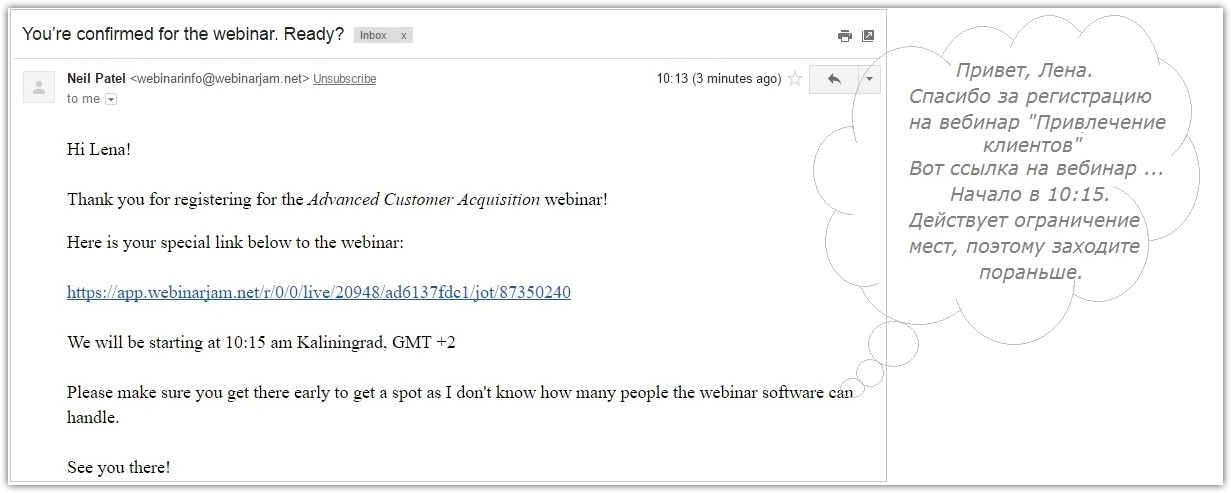
At the end of the webinar, they suggest you sign up for regular newsletters. And if you agree, Neal has one more potential client. A subscriber purchased in this way is potentially more loyal to your product, because he has already managed to evaluate its benefits.
At SendPulse Academy You can learn how to promote your business for free from speakers with years of experience in Internet marketing.
№3 Research results, reports and statistics
For research, choose a topic that will be interesting to potential customers, but poorly represented in the market. So you can create valuable content that will attract users.
The health care website www.getperfecthealth.com collects email addresses, offering a free report in return. It includes stress management tips for anyone who is often exposed to it.

No. 4 Checklists
Checklists or useful lists are a mini cheat sheet, which contains a number of necessary items for the correct performance of any work.
An example from the studio of Denis Kaplunov for everyone who works with advertising texts. In return for the email address you receive checklists for writing texts of email newsletters, cases, the website’s home page, etc.
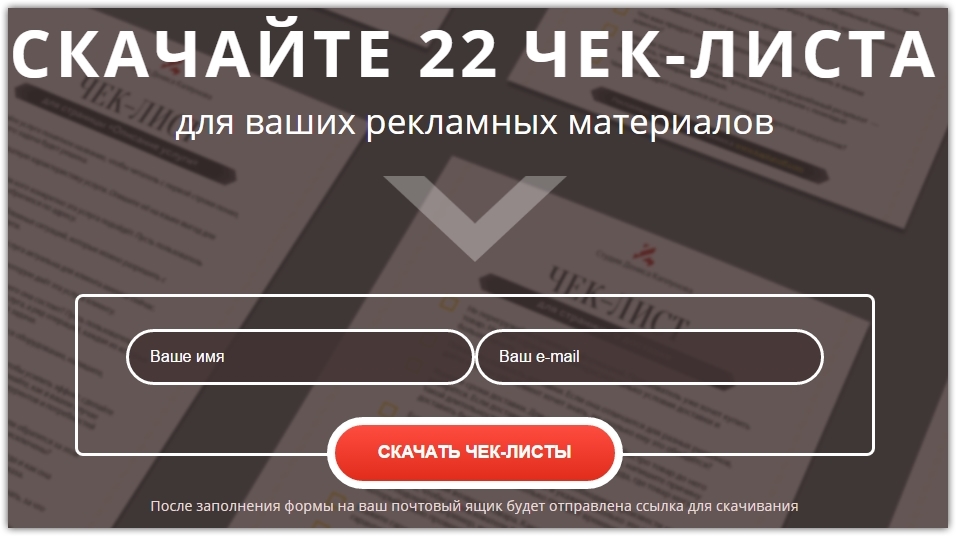
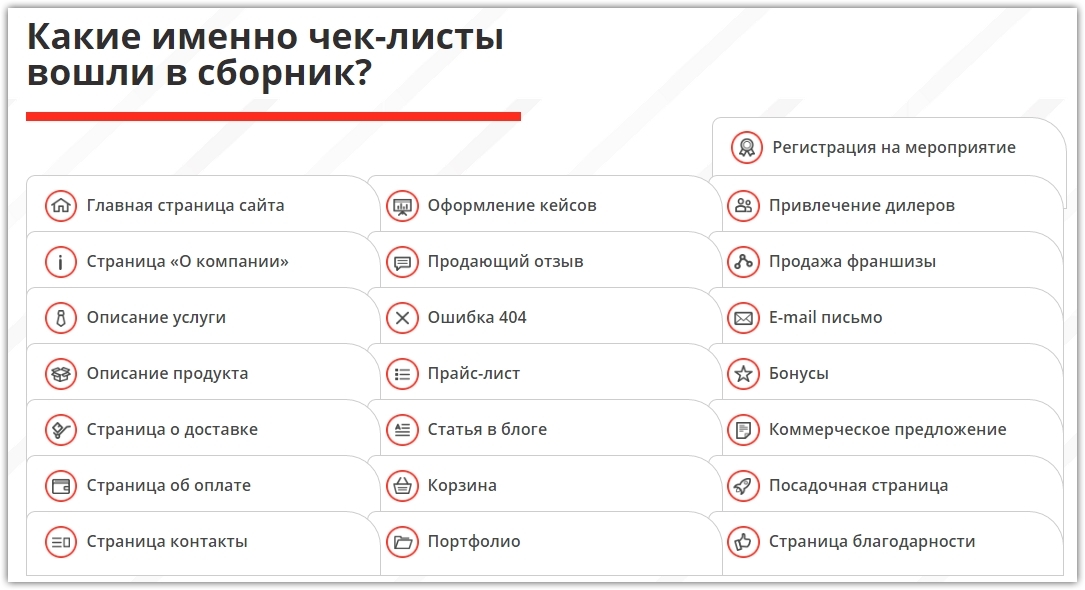
Number 5 Infographics
Infographics are a visual presentation of information, and everything that a person perceives through the visual channel is easier for him to learn and remember.
If you are posting articles from your blog, as far as possible, alternate articles with infographics.
Good infographics should be:
- useful;
- clear;
- visually appealing.
Below is an example of a newsletter with infographics, the theme of which is: "10 steps to get started, having full employment."
In the letter, you will read about the author of infographics and his experience in large companies. There is also a small preview image of the infographic itself, and a list of what you will learn from it. All this in total increases the chances of downloading.

No. 6 Raffle
People like to try their luck in the hope of getting something for free. Below you see a newsletter from the Yoga Journal, which offers to win a free course from the master.
There is nothing superfluous in the letter: only a brief description of the course and two “Enter and Win” buttons, with the transition to the target site.

No. 7 Discount Coupon
The lead magnet in the form of a discount coupon is used both for collecting addresses and for warming up leads.
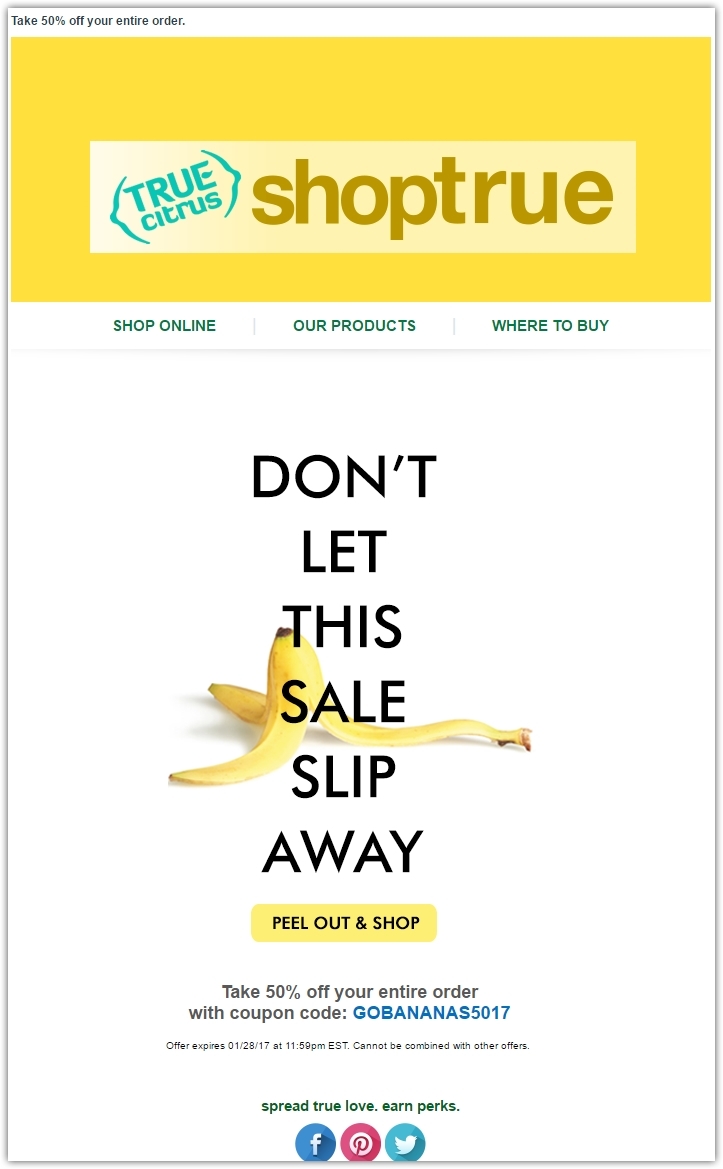
No. 8 Free Trial
There are several options for how to test drive your product. You can set a free trial period, the duration of which you consider sufficient for familiarization. And you can make a free basic version, in which additional features are included in a paid package.
HootSuite offers as many as 60 days of using the professional version. The letter describes all its advantages, a standard price, and the offer is valid only until the end of the day.
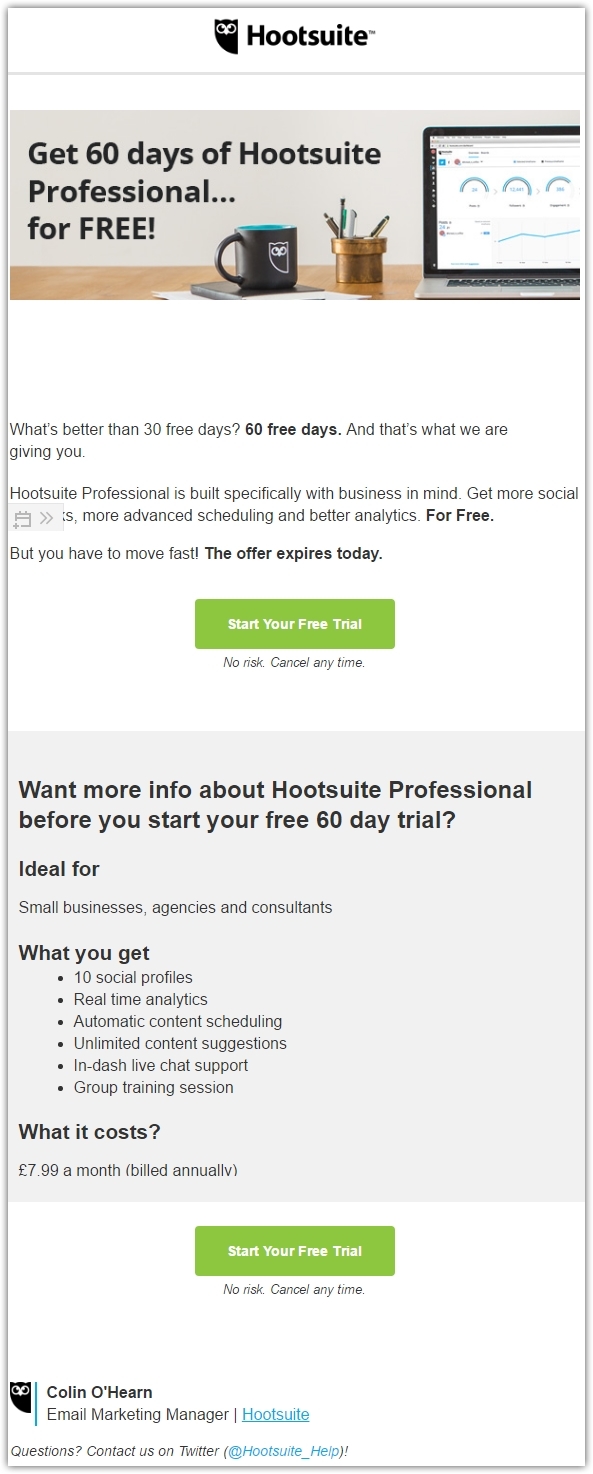
No. 9 Video
Once again, the Product Psychology newsletter example. This time, the letter suggests buying conference tickets. Here, a video from last year’s conference is used as a lead magnet. In it, speakers from Google Ventures tell how to create a prototype in 5 days and test any idea.
If you were inspired to create such a lead magnet, read our article on how to better use video in email .

By and large, anything can become a lead magnet if it is useful, relevant, solves the problem of users and leads to the desired target action.
So turn on creativity and create lead magnets that magnetize.
